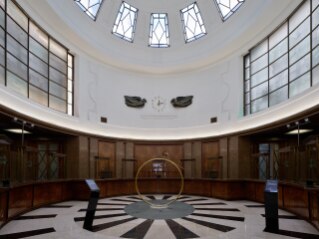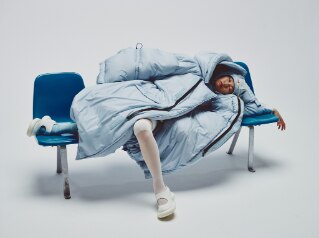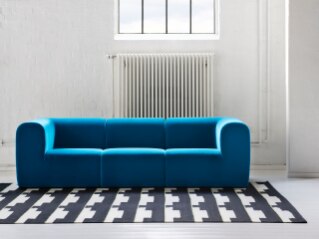Gucci shot the campaign for its new fragrance at La Scarzuola. I discovered it on Instagram, on the first Sunday morning of August, when Floria Sigismondi’s pictures of Anjelica Huston, Florence Welch, Jodie Turner-Smith and Susie Cave in the ideal city of Tomaso Buzzi were posted on the brand’s official profile.
I remember I discovered La Scarzuola in 2016, when Alessandro Mendini published a picture of it on the 1000th issue of Domus magazine. The caption, written in capital letters at the bottom of the page, was “Theatrum Mundi”.
Shortly afterwards I went to visit it for the first time. Immersed in the Umbrian countryside, in Montegabbione, in the province of Terni, La Scarzuola is a project by the architect Tomaso Buzzi, who in 1956 bought this convent from the Franciscan friars in order to transform it into his private home, where he built seven outdoor and indoor theatres. The result is a three-dimensional translation of Buzzi’s fantastic, eclectic and dreamlike world.

I am amazed and delighted by the brilliant choice of location. Of course, with the restrictions due to COVID-19, many brands were forced to rethink the choices they had previously made for their advertising campaigns: now they are all focusing on the Italian territory to facilitate the operation. I don’t know if this is the case, but it is an excellent strategy to make this incredible architectural complex known internationally.
The protagonists of the film directed by award-winning photographer and director Sigismondi are four women. They wander and dance among flowering hedges in the dreamlike environments created by Tommaso Buzzi. “When I started imagining the new Gucci Bloom campaign, I started from the mystical dimension of feminine sensitivity and its connection with the idea of nature,” says Alessandro Michele. “Anjelica, Florence, Jodie and Susie embody four different ways of being a woman, and perform the ritual of flowers as if they were vestals, while Floria Sigismondi is the priestess behind the camera. Even filming the countryside itself has been a magical experience”.
Luxury or not, many brands have been focusing for quite some time on architectural sets for their advertising campaigns. Just think of Louis Vuitton, who in 2016 shot his spring-summer collection in the iconic Cuadra San Cristóbal by Luis Barragán in Mexico City. The following year, the French brand’s new collection was presented outside the Museum of Contemporary Art in Niterói, Rio de Janeiro, designed by Oscar Niemeyer. In the same year, Bottega Veneta organized a show in Alberto Burri’s Grande Cretto in Gibellina, a city that became, in 2020, the backstage for the promotion of the exclusive “Hermès Silk” line.
Also in 2016, photographer Annemarieke Van Drimmelen shot for Fendi in the terraces of the open-air theatre of the EUR Palazzo dei Congressi in Rome, designed by Adalberto Libera.
In 2019, CP Company chose to celebrate one of the most important masters of Italian organic architecture, Aldo Loris Rossi, using the Casa del Portuale in Naples as the set for the spring-summer 2020 campaign.
A bold choice, that of CP Company, which distinguishes the brand from the previously mentioned luxury brands. The work of Aldo Loris Rossi, in fact, is much less well known than that of masters such as Barragán, Niemeyer, Libera. Behind the choice of this location lies years of research aimed at transmitting the spirit of the company through the production of images. The same research and curatorial attention that we find today in the Gucci commercial created for the new fragrance.

Besides the individual choices made by companies, it is necessary to reflect today on the theme of the relationship between fashion and architecture. At a time when a reorganization of the discipline and a revision of the role of the architect in society appear necessary, the growing interest of fashion houses towards architecture as a scenography can become an important opportunity for professionals in the sector. Following the principle of cross-pollination between the arts on which Germano Celant has based his entire career, we could imagine a future of interdisciplinary collaborations and advertising campaigns in which architecture is not only the background for a commercial product, but becomes the result of specific research carried out by professionals for the brand.

A new world of Italian style
The result of an international joint venture, Nexion combines the values of Made in Italy with those of Indian manufacturing. A partnership from which the Lithic collection of ceramic surfaces was born.

















